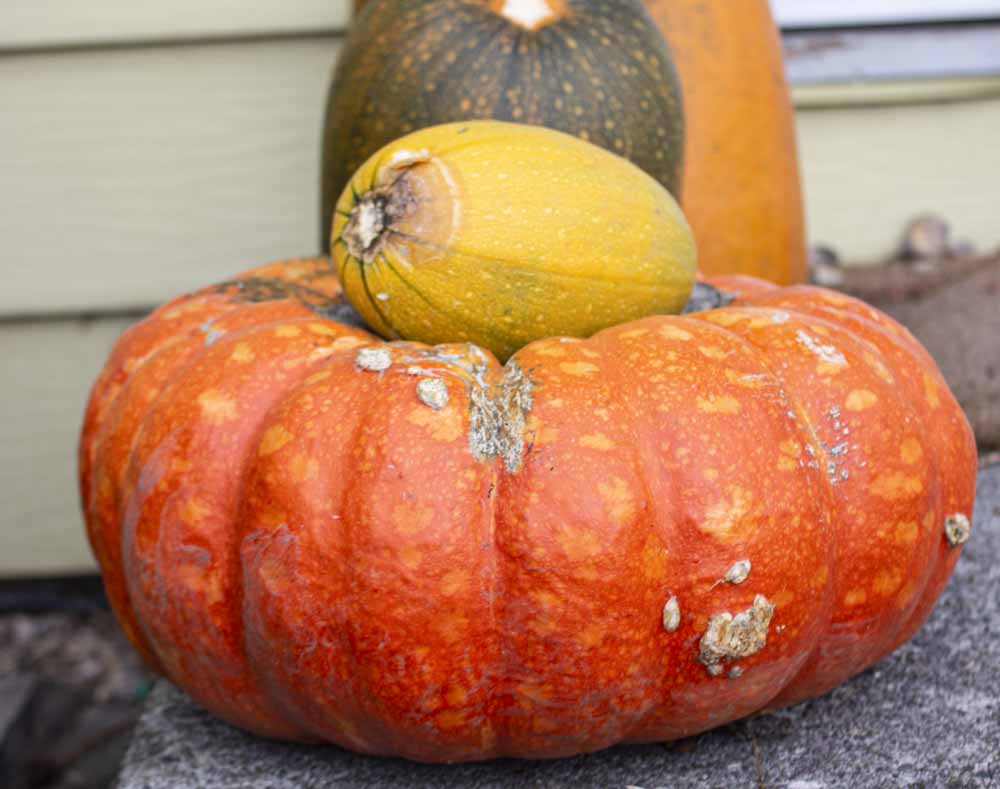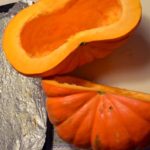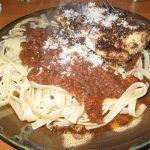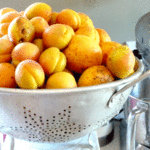You can easily substitute fresh pumpkin for canned pumpkin, but a couple extra steps are needed to ensure the final product is perfect. Follow these steps to ensure you end up with a perfectly roasted pumpkin that is superior in both flavor and texture.
Selecting the Right Pumpkin
Your journey to the perfect pumpkin puree begins with choosing the right variety of pumpkin. Those big pumpkins we carve for Halloween have flesh that is watery and stringy, so leave those for just decoration.
For cooking and baking, choose pumpkin varieties with dense, sweet flesh. This includes Sugar Pumpkins, Long Island Cheese, anything with the word “Pie” in the name, Fairytale, and Rogue Vif d’Etampes (my favorite). More and more of these varieties can be found at the grocery store and farmers markets, but nothing beats growing your own.

Roasting Pumpkin + Making Puree
You’ve chosen the perfect pumpkin – now let’s roast it! Roasting pumpkin is easy, but takes a little time. Do it ahead of time, set aside what you plan to use that week, and freeze the rest. You’ll have delicious pumpkin puree anytime you need it.
- Preheat the oven to 375 degrees. Wash the exterior of the pumpkin, then slice it in half from top to bottom. Scoop out the seeds – mine go to the chickens, but you might want to save some to roast later.
- Brush a couple tablespoons of olive oil* over interior of the pumpkin. Place it cut side down on a baking sheet. Roast for 45 minutes, then check every 5 minutes to test for doneness. It should pierce easily with a fork. (Bigger pumpkins might take closer to an hour)
- Once tender, remove from the oven and let cool until you can safely handle it. Separate the shell from the flesh by either peeling off by hand or scooping out with a large spoon.
- Puree the roasted pumpkin flesh with an immersion blender (my preferred method), food processor, blender, or potato masher to your preferred consistency.
*Note: if olive oil is not your thing, you can use grapeseed, canola, vegetable oil. You can omit the oil altogether – the cut sides that touch the pan might just stick/char a little. Discard those areas prior to roasting so you don’t impart a burnt flavor into your puree.

Perfect Pumpkin Puree (Optional Step)
Many excellent cooks will claim that canned pumpkin is still superior to fresh. Their main argument is that 1) you can’t taste the difference and 2) fresh pumpkin puree is still too watery. If you take the time to drain your freshly roasted pumpkin puree, it will intensify the pumpkin flavor and result in a creamier texture.
Simply line a colander with cheesecloth, set it in the sink, and pour in the puree. Let the pumpkin puree sit anywhere from four hours to overnight.
The final result will be thick, creamy puree you can easily mound up on a spoon – similar in texture to tomato paste. The flavor is intensified because so much excess water has been purged, so you are left with more pure pumpkin deliciousness.
*Draining the pumpkin puree is optional, for those cooks who want the most perfect, persnickety puree. I’ve skipped this step for over a decade and still had great baking/cooking results using homemade puree. But for you perfectionists, give it a shot and tell me what you think.

Freeze Your Pumpkin Puree
Refrigerate what you plan to use in the next few days, then freeze the rest. To freeze, fill muffin tins with pumpkin puree. Place the whole muffin tin in the freezer overnight.
After firmly frozen, pop out each “pumpkin puck” and place in the labeled freezer bag for long-term storage. If they are difficult to get out, let them sit for five minutes to slightly thaw around the edges. You could also use a butter knife to carefully loosen.
Keep using that frozen pumpkin puree until it runs out or you can replace it next fall – whatever comes first. Someone out there will tell you it’s probably best within six months – there might be a slight decrease in quality the longer it’s frozen. But we all know homegrown pumpkins are only ready for harvest once a year: in the fall. So forget about that and just enjoy homemade pumpkin puree, harvested at its peak flavor, all year long.







 This cluster was about the siz
This cluster was about the siz




 I start with a
I start with a

